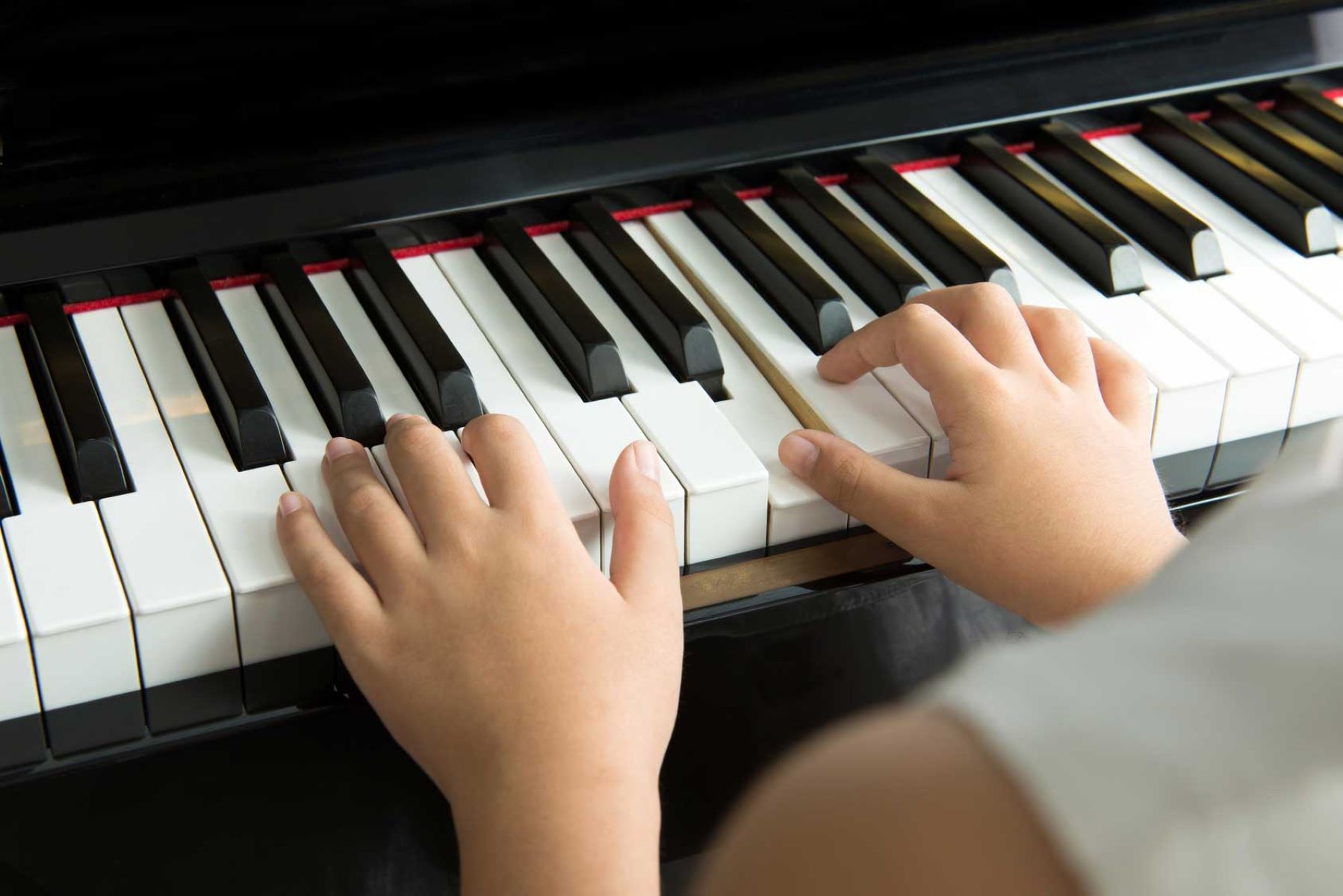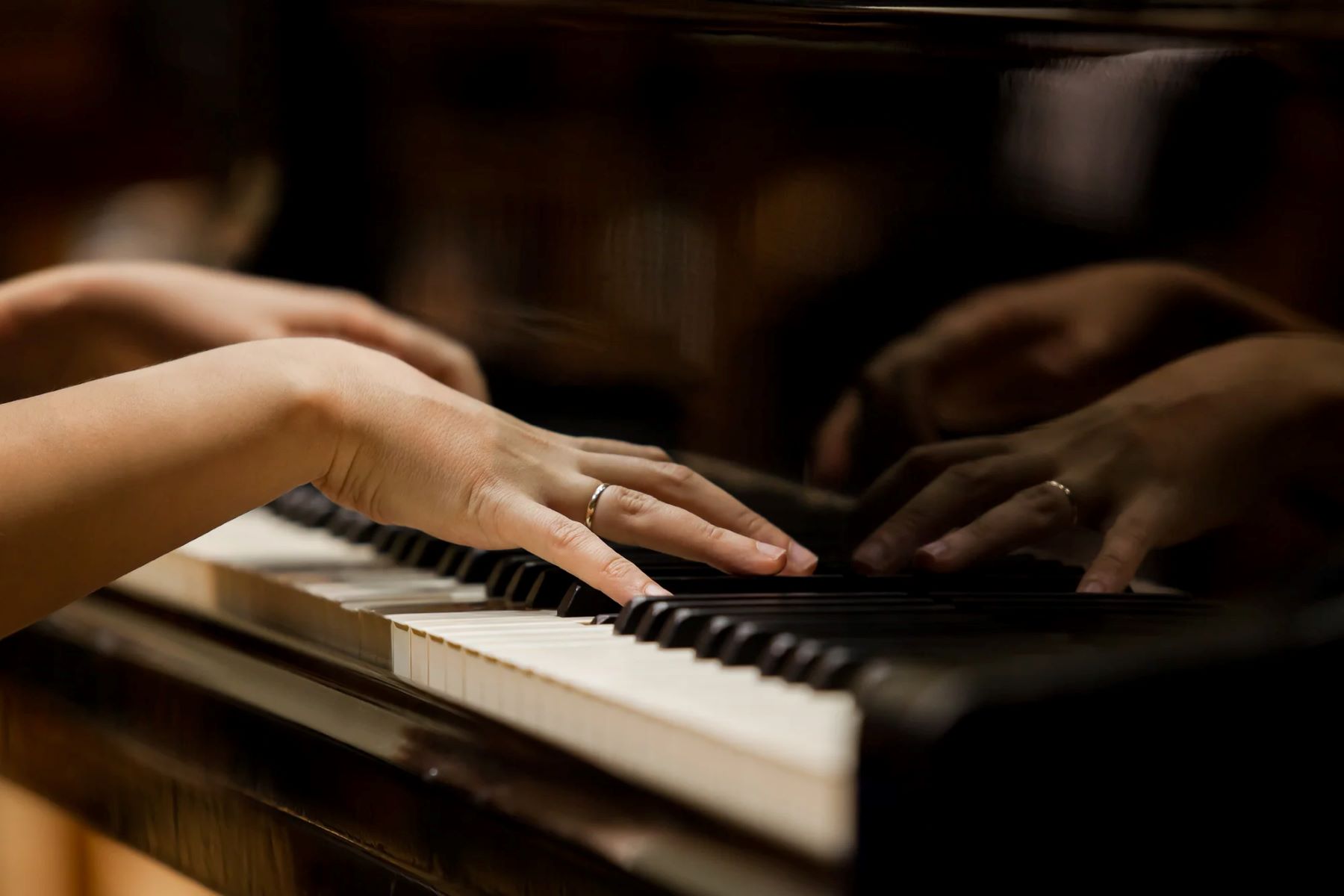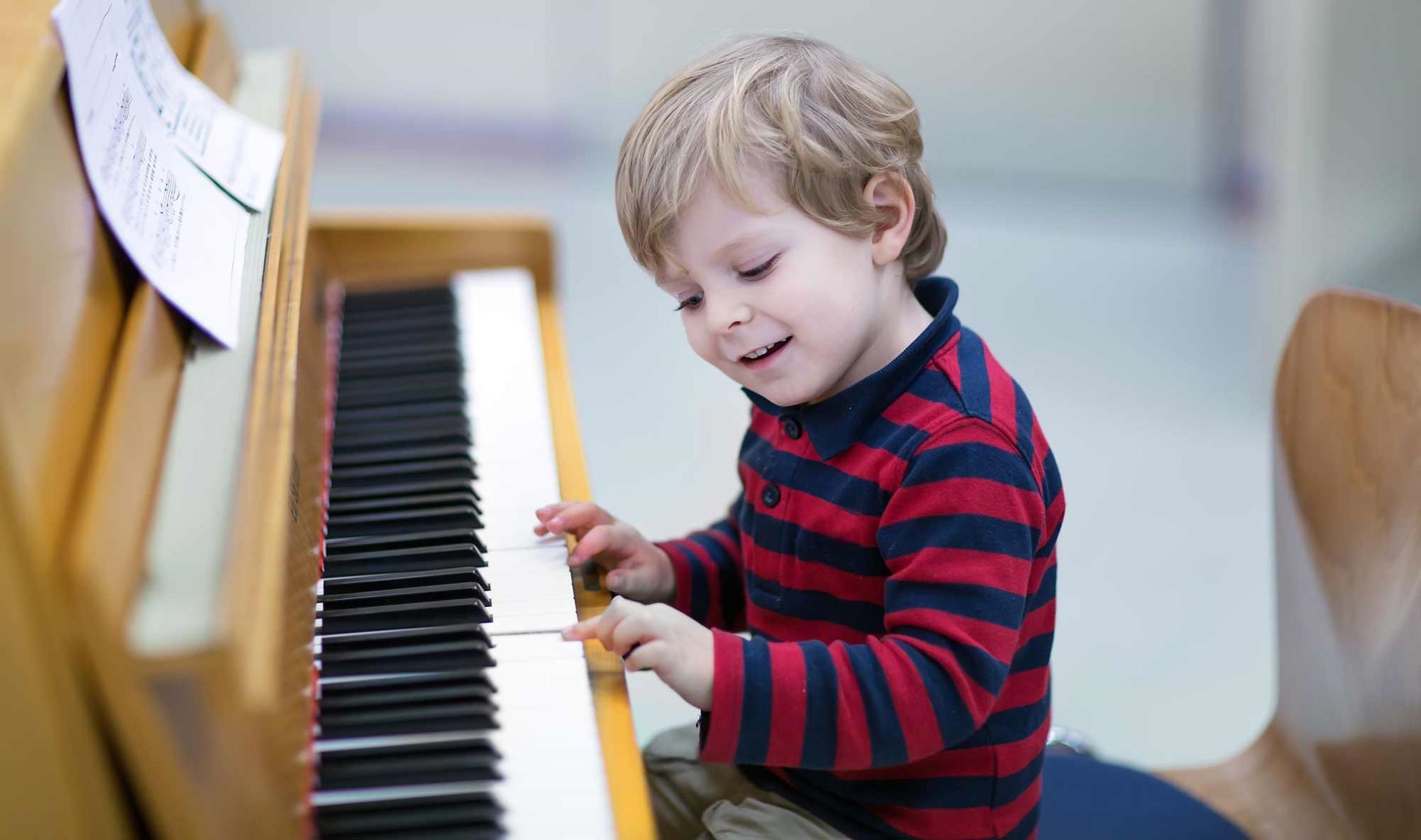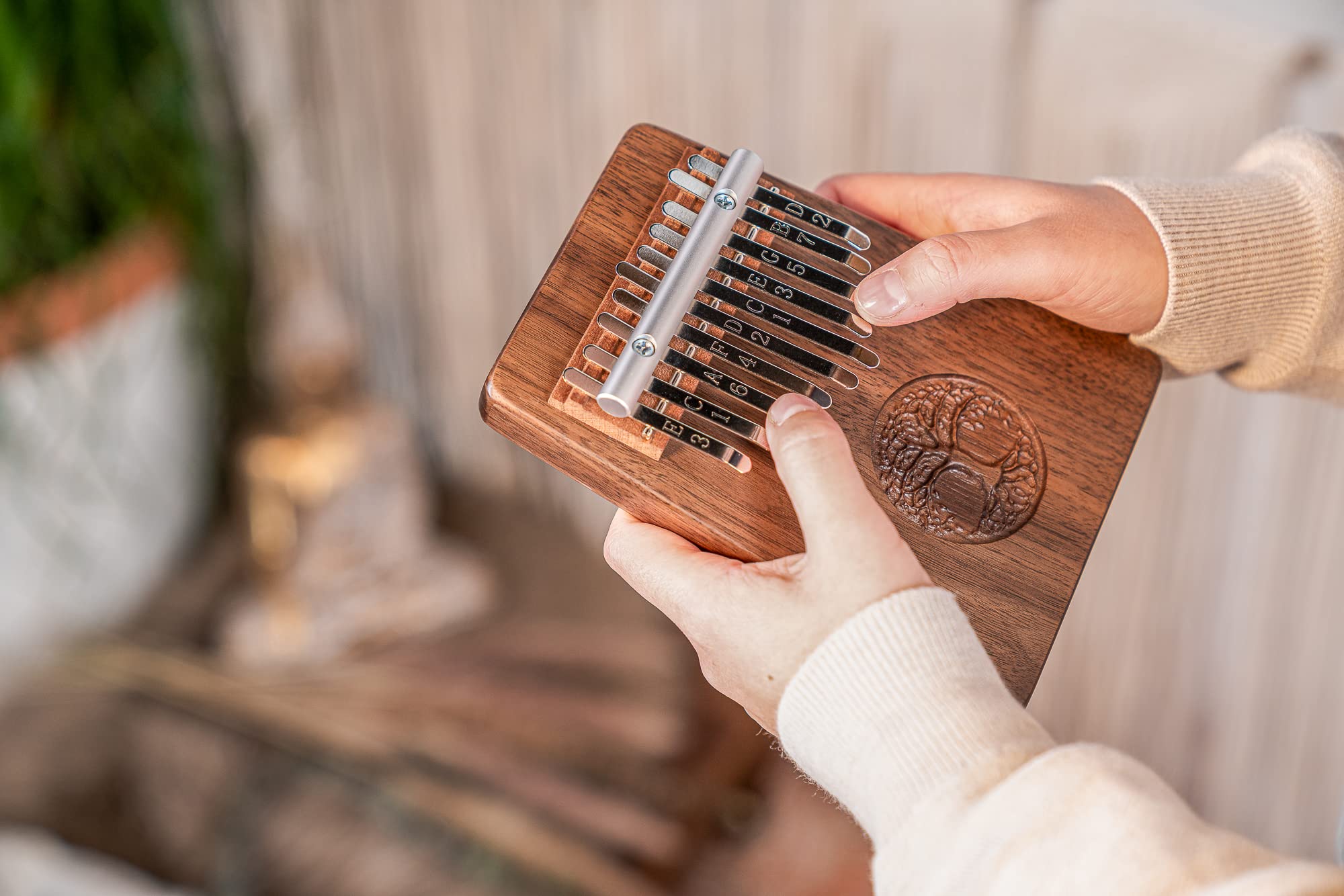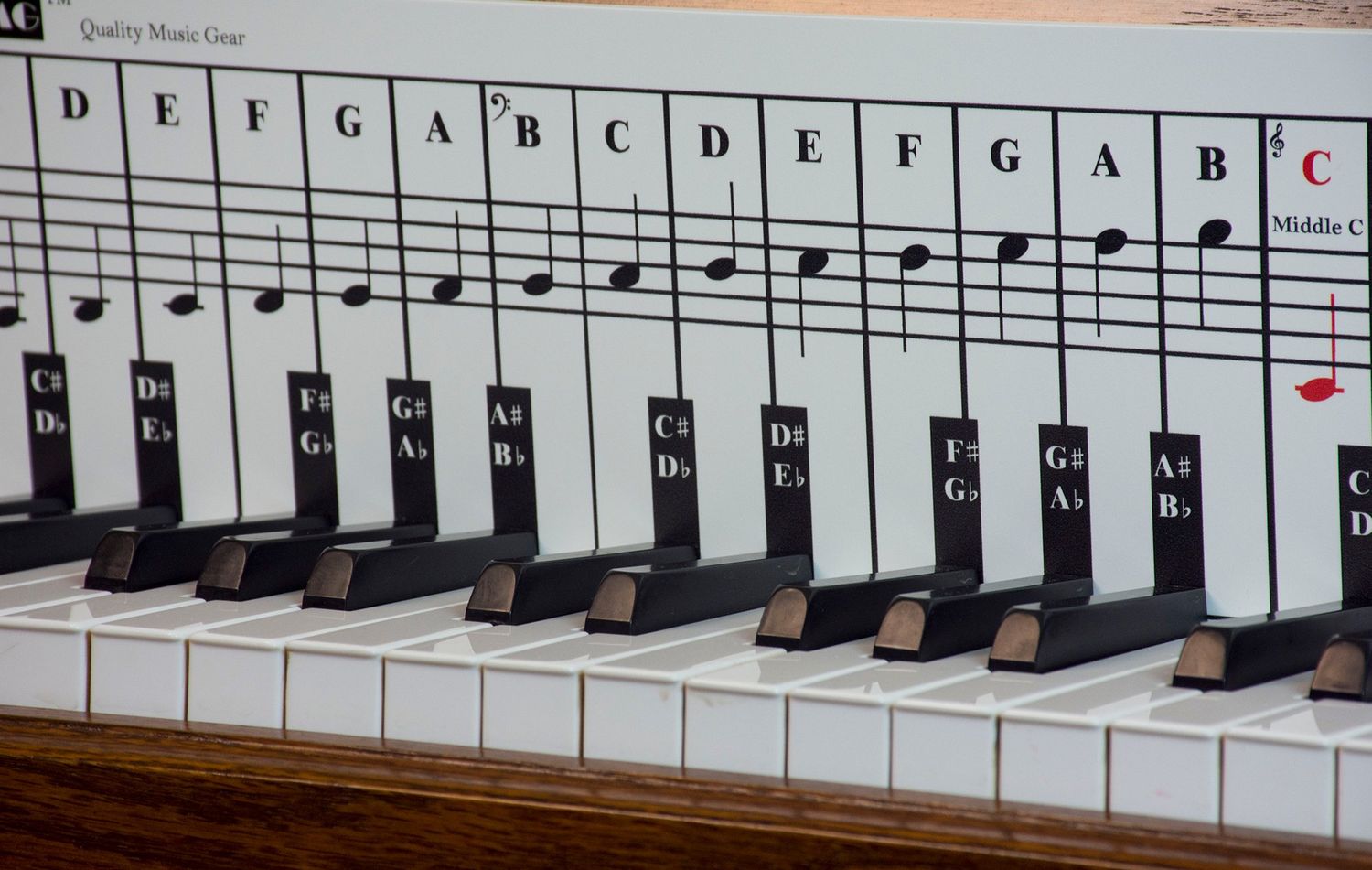Home>Instruments>Piano>How To Play The Piano By Ear


Piano
How To Play The Piano By Ear
Published: February 9, 2024
Learn how to play the piano by ear and improve your musical skills with our comprehensive guide. Master the art of playing the piano without sheet music.
(Many of the links in this article redirect to a specific reviewed product. Your purchase of these products through affiliate links helps to generate commission for AudioLover.com, at no extra cost. Learn more)
Table of Contents
**
Introduction
**
Playing the piano by ear is a remarkable skill that allows musicians to listen to a piece of music and replicate it on the piano without the need for sheet music. It involves a deep understanding of music theory, a keen ear for melody and harmony, and the ability to translate these auditory cues into precise piano notes. While reading sheet music is valuable, learning to play by ear opens up a world of musical possibilities, enabling improvisation, interpretation, and creativity.
In this article, we will explore the art of playing the piano by ear, delving into the foundational aspects of music theory, ear training, chord progressions, and practical techniques. Whether you're a beginner pianist eager to expand your musical horizons or an experienced player looking to enhance your skills, mastering the art of playing by ear can be a rewarding and enriching journey.
Throughout this guide, we'll provide insights into understanding the basics of music, developing your ear to recognize melodies and harmonies, learning essential chords and scales, applying techniques to play by ear effectively, and practicing to improve your skills. By the end of this article, you'll have a solid understanding of what it takes to play the piano by ear and be equipped with the knowledge to embark on this fulfilling musical endeavor.
So, let's embark on this melodic journey and discover the joy of playing the piano by ear, where creativity, intuition, and musical expression converge to create beautiful melodies from the depths of your soul.
Playing the piano by ear is a remarkable skill that allows musicians to listen to a piece of music and replicate it on the piano without the need for sheet music. It involves a deep understanding of music theory, a keen ear for melody and harmony, and the ability to translate these auditory cues into precise piano notes. While reading sheet music is valuable, learning to play by ear opens up a world of musical possibilities, enabling improvisation, interpretation, and creativity.
In this article, we will explore the art of playing the piano by ear, delving into the foundational aspects of music theory, ear training, chord progressions, and practical techniques. Whether you’re a beginner pianist eager to expand your musical horizons or an experienced player looking to enhance your skills, mastering the art of playing by ear can be a rewarding and enriching journey.
Throughout this guide, we’ll provide insights into understanding the basics of music, developing your ear to recognize melodies and harmonies, learning essential chords and scales, applying techniques to play by ear effectively, and practicing to improve your skills. By the end of this article, you’ll have a solid understanding of what it takes to play the piano by ear and be equipped with the knowledge to embark on this fulfilling musical endeavor.
So, let’s embark on this melodic journey and discover the joy of playing the piano by ear, where creativity, intuition, and musical expression converge to create beautiful melodies from the depths of your soul.
**
Understanding the Basics of Music
**
Before delving into the intricacies of playing the piano by ear, it’s essential to grasp the fundamental elements of music. Music theory forms the backbone of musical understanding and serves as a guide for interpreting and creating music.
At its core, music theory encompasses key components such as melody, harmony, rhythm, and form. Melody represents a sequence of single notes that form a musical phrase, while harmony involves the combination of different notes played simultaneously to create a rich, layered sound. Rhythm dictates the timing and tempo of the music, infusing it with movement and energy, while form refers to the overall structure and organization of a piece of music.
Understanding scales and intervals is also pivotal in music theory. Scales, such as the major and minor scales, provide a framework for organizing musical notes, while intervals define the distance between two notes, contributing to the overall sound and emotion of a composition.
Furthermore, familiarizing oneself with musical notation, including the staff, clefs, and note values, is crucial for interpreting and communicating musical ideas. The staff, comprising five lines and four spaces, serves as the canvas for notating musical symbols, while clefs indicate the pitch range of the notes. Note values, such as whole notes, half notes, and quarter notes, denote the duration of sounds, shaping the rhythm and flow of the music.
Aspiring pianists aiming to play by ear must also develop a strong understanding of chord progressions and cadences. Chord progressions are sequences of chords that underpin a piece of music, contributing to its harmonic structure and emotional resonance. Cadences, on the other hand, mark the end of a musical phrase or section, providing a sense of resolution or continuation.
By comprehending these foundational elements of music theory, aspiring pianists can lay a solid groundwork for playing the piano by ear. This knowledge forms the bedrock upon which the ability to recognize and replicate melodies, harmonies, and chord progressions by ear is built.
**
Developing Your Ear
**
Developing a keen ear is paramount for playing the piano by ear with proficiency and confidence. Ear training involves honing the ability to discern pitch, identify intervals, recognize chord progressions, and internalize melodies.
One of the fundamental aspects of ear training is pitch recognition. This entails the capacity to differentiate between various pitches and understand their relationships within a musical context. Pitch recognition forms the basis for accurately reproducing melodies and harmonies on the piano without the aid of sheet music.
Additionally, mastering intervals is crucial for ear development. Intervals are the spaces between two notes and play a significant role in shaping the emotional and melodic character of music. By training to identify and replicate intervals by ear, pianists can enhance their capacity to play melodies and chord progressions with precision.
Furthermore, familiarizing oneself with chord progressions is essential for ear development. Chord progressions form the harmonic framework of a piece of music and understanding their patterns and relationships is pivotal for playing by ear. By listening attentively to various chord progressions, pianists can internalize these patterns and replicate them on the piano, fostering a deeper connection between their auditory perception and musical expression.
Another valuable aspect of ear training is melodic dictation, which involves transcribing melodies by ear. By actively listening to and notating melodies, pianists can refine their ability to recognize and reproduce musical phrases, further strengthening their capacity to play by ear.
Engaging in regular ear training exercises, such as interval recognition drills, chord progression analysis, and melodic dictation, can significantly enhance a pianist’s ear and facilitate the seamless translation of auditory input into expressive piano playing. Moreover, actively listening to a diverse range of musical genres and styles can broaden one’s musical vocabulary and deepen their understanding of melodic and harmonic structures.
By dedicating time and effort to ear training, pianists can cultivate a heightened sensitivity to musical nuances, empowering them to play the piano by ear with fluency and artistry.
Learning Chords and Scales
Mastering chords and scales is fundamental to playing the piano by ear and forms the cornerstone of harmonic and melodic understanding. Chords, comprising a combination of three or more notes played simultaneously, create the harmonic framework of music, while scales provide the melodic and harmonic foundation for improvisation and composition.
Understanding chords involves familiarizing oneself with chord types, including major, minor, diminished, and augmented chords, among others. Each chord type imparts a distinct emotional quality to music, and recognizing their sound and structure is essential for playing by ear. Additionally, learning chord inversions and voicings enhances a pianist’s ability to interpret and replicate chord progressions with fluidity and expression.
Moreover, delving into scales is pivotal for developing melodic fluency and improvisational skills. Scales such as the major, natural minor, harmonic minor, and melodic minor scales provide a framework for navigating the piano keyboard and creating melodic lines by ear. Understanding the intervals and patterns within scales empowers pianists to craft captivating melodies and improvise harmonically rich passages with confidence.
Furthermore, exploring modal scales, such as the Dorian, Mixolydian, and Lydian modes, expands a pianist’s harmonic palette and nurtures a deeper understanding of tonal color and expression. By immersing oneself in the study of scales, pianists can internalize the unique characteristics of each scale, enabling them to infuse their playing with emotive depth and musical versatility.
Practicing chord progressions and scale patterns in various keys and contexts is instrumental for honing the ability to play by ear. This cultivates a comprehensive understanding of harmonic relationships and melodic structures, empowering pianists to interpret and reproduce music with spontaneity and creativity.
By mastering chords and scales, pianists lay a robust foundation for playing the piano by ear, fostering a deep-rooted comprehension of harmony and melody that transcends the confines of traditional notation and emboldens musical expression.
Applying Techniques to Play by Ear
Playing the piano by ear involves the application of specific techniques that enable pianists to interpret and reproduce music solely based on auditory input. These techniques encompass a blend of musical understanding, ear training, and improvisational skills, culminating in the ability to spontaneously translate melodies, harmonies, and chord progressions into captivating piano performances.
One of the primary techniques for playing by ear is the cultivation of a strong internalized understanding of music theory and harmony. This includes a deep familiarity with chord structures, progressions, and scales, allowing pianists to intuitively recognize and reproduce these elements in real-time without the need for sheet music.
Developing a robust sense of relative pitch is also essential for playing by ear. Relative pitch enables pianists to identify and replicate musical intervals and chord progressions based on their relationship to a reference note. This skill empowers musicians to play by ear with accuracy and confidence, seamlessly translating musical ideas from the mind to the piano keys.
Moreover, embracing improvisational techniques nurtures the ability to spontaneously create music by ear. Improvisation encourages pianists to explore melodic variations, harmonic embellishments, and rhythmic nuances, fostering a fluid and expressive approach to playing by ear. By immersing oneself in the art of improvisation, pianists can unleash their creative potential and infuse their performances with a sense of spontaneity and individuality.
Utilizing mnemonic devices and mental associations can aid in memorizing and recalling musical patterns, facilitating the process of playing by ear. Mnemonics provide mental shortcuts for remembering chord progressions, scale patterns, and melodic motifs, empowering pianists to internalize and reproduce music with ease and precision.
Furthermore, actively engaging with recordings of diverse musical styles and genres hones a pianist’s ability to play by ear. By listening attentively to a wide array of music, pianists can absorb nuanced phrasing, stylistic elements, and harmonic structures, enriching their musical vocabulary and enhancing their capacity to interpret and reproduce music by ear.
By integrating these techniques into their musical practice, pianists can unlock the transformative power of playing the piano by ear, transcending the confines of written notation and embracing a dynamic, intuitive approach to musical expression.
Practicing and Improving Your Skills
Consistent and focused practice is pivotal for honing the ability to play the piano by ear and refining one’s musical proficiency. By embracing deliberate practice strategies and immersing oneself in ear training exercises, aspiring pianists can elevate their skills and cultivate a deep-seated capacity for playing by ear with fluency and artistry.
Engaging in regular ear training exercises is essential for sharpening one’s auditory perception and developing a keen ear for pitch, intervals, and chord progressions. Dedicate time to interval recognition drills, chord progression analysis, and melodic dictation to fortify your ability to discern and reproduce musical elements by ear.
Exploring diverse musical genres and styles broadens your musical vocabulary and deepens your understanding of melodic and harmonic structures. Actively listening to a wide array of music exposes you to varied phrasing, stylistic nuances, and expressive techniques, enriching your interpretative skills and fostering a versatile approach to playing by ear.
Embrace the art of improvisation to nurture spontaneity and creativity in your playing. Improvisational practice empowers you to explore melodic variations, harmonic embellishments, and rhythmic nuances, fostering a fluid and expressive approach to playing by ear. Through improvisation, you can unlock your creative potential and infuse your performances with a sense of individuality and artistic freedom.
Additionally, regular practice of scales, chord progressions, and melodic patterns in different keys and contexts enhances your ability to navigate the piano by ear. This comprehensive study of harmonic and melodic structures lays a robust foundation for interpreting and reproducing music with spontaneity and confidence.
Seek opportunities to play with other musicians and participate in ensemble settings to further develop your ability to play by ear. Collaborative music-making provides a dynamic environment for applying your ear training and improvisational skills in real-time, fostering musical dialogue and enhancing your adaptability as a pianist.
By integrating these strategies into your practice routine and embracing a dedicated and explorative approach to musical learning, you can nurture a profound capacity for playing the piano by ear, unlocking the boundless potential for creative expression and musical interpretation.


